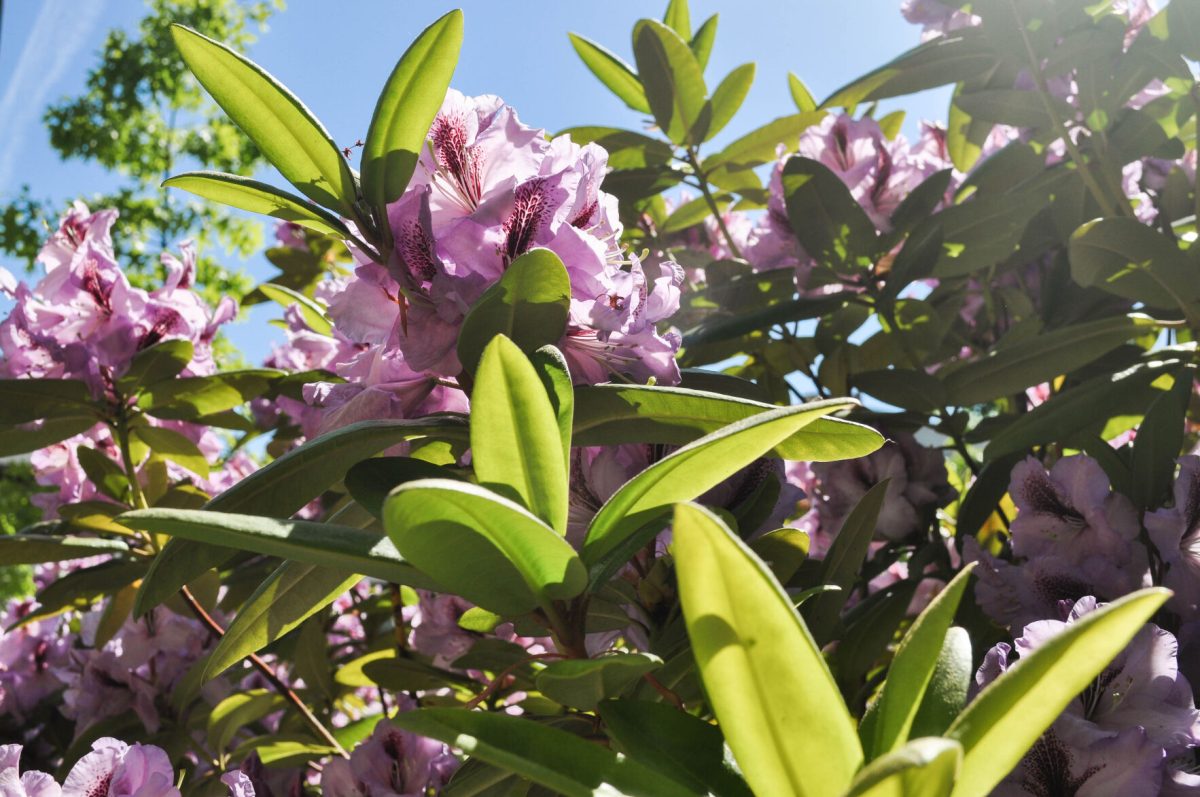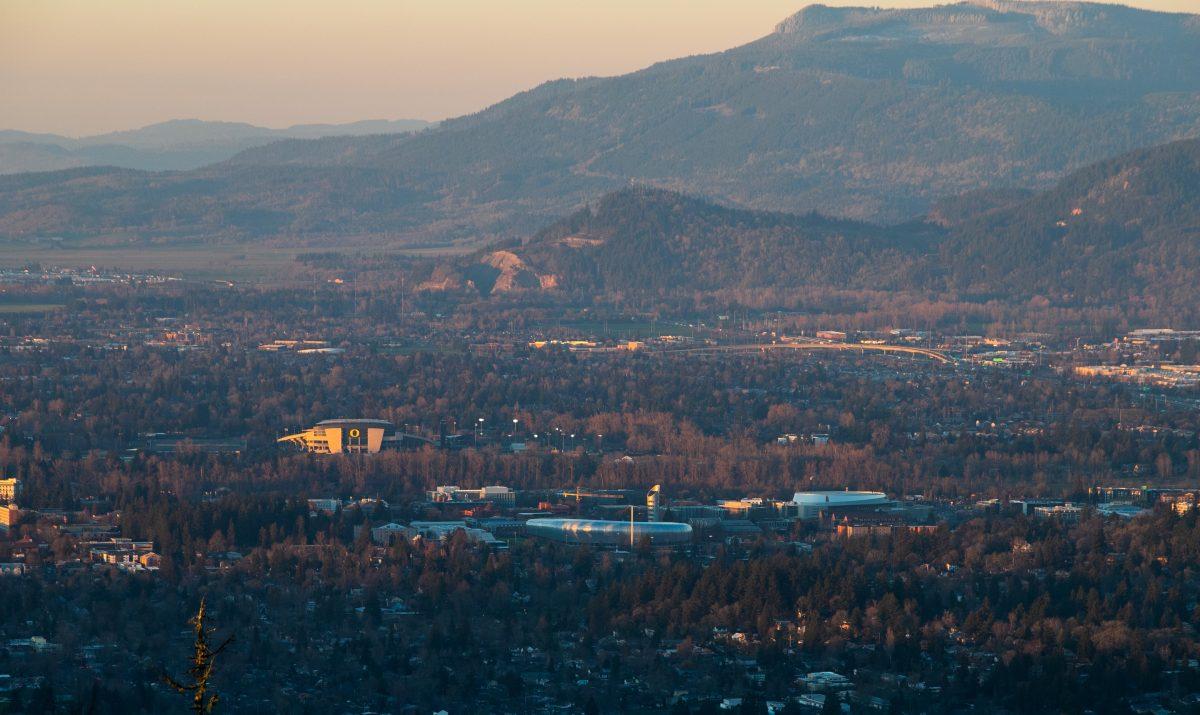As an East Coast native, I get hit with the “Why Oregon?” question at least twice a week. One answer among a plethora holds true: the environment. Features such as the accessibility to nature, the perfectly-sized college town cozied up along Franklin Boulevard and East 13th Avenue and a walkable campus honoring the natural splendor of pine trees that grace areas between academic buildings and residence halls drew me here. It’s truly idyllic.
I have one anthropogenic concern with it though: the relentless construction overshadowing the institution’s beauty. It turns once-inviting spaces into a maze of disfigurement.
I recently toured Oregon lacrosse hopefuls and their families around campus. This time of year, the beauty of University of Oregon’s campus shines as dewy glass windows wonderfully juxtapose with the university’s varied academic structures. Greco-Roman architecture paired next to minimalist, open-concept buildings offers a dynamic dialogue between the classical and the contemporary.
“Is this building…open? It looks a bit, uh, undercooked,” questioned a recruit as we tried to scurry past Knight Library.
“The library is undergoing construction as you might be able to guess. But don’t worry, it’ll be done by 2026!” I replied. “I bet they’re ecstatic about that,” I sarcastically remarked to myself.
With a goal of “marrying historic context and legacy with the future of research and innovation,” Knight Library remains in development while constructive efforts are set forth to propel the campus into a forward-thinking environment.

As athletic recruits step onto campus, they want to feel at home. For UO students embarking on their first quarter back to campus, they are home. Despite not having much of a say on this debate, college students want an unblemished campus in their lifetime, too.
“When they were working on the Duck Store and apartments on 13th and Kincaid,” Oregon master’s student Maddie Huelbig said, “That was super annoying.”
Huelbig, who resides in off-campus housing, said she has a car but often walks to and from campus. She explained the inconvenience of building sites on and around UO’s campus that detract from the natural beauty of the university. Candidly, she admits it to be vexing when in search of a study spot that isn’t penetrated by construction clamor nearby.
Being in school for the summer term, I was also able to reflect on the nuisance that it brings. If I was planning on a hot girl walk, I had to stay attuned as I approached the College of Education and took a detour path around the Eugene Pioneer Cemetery. On the way to the athletic fields, I’m mindful not to trample someone on my bike as the Knight Science Center’s Building 2 is being pieced together and pedestrian footpaths converge.
UO could benefit from concealing its construction in a creative way to minimize visual disruption. One option could be to encourage artistic barriers, such as leveraging local artists’ work or that of UO students to place on display while the laborious projects ensue.
Another way to divert from public eyesores is to install a temporary landscape.
Imagine this: you’re rucking across a cement path on a hazy Tuesday morning. Gazing in front, you notice a botanical tapestry surrounding your walkway. Ignoring the dull plastic wraps encasing your once-beloved study hall, you’re suddenly grounded and reminded of what sets UO apart. Never mind the eroding bricks and structural issues that the library is quietly remediating.
Flowers and warm-toned foliage create a visual discourse that overlooks the building’s unremarkable facade. They draw attention away from the less appealing aspects of construction but still foster community in nearby sites. The thoughtful placement of greenery or student artwork can elevate the campus aesthetic, despite its impermanence. Nonetheless, it serves as a reminder that even amidst construction projects, beauty can thrive.











